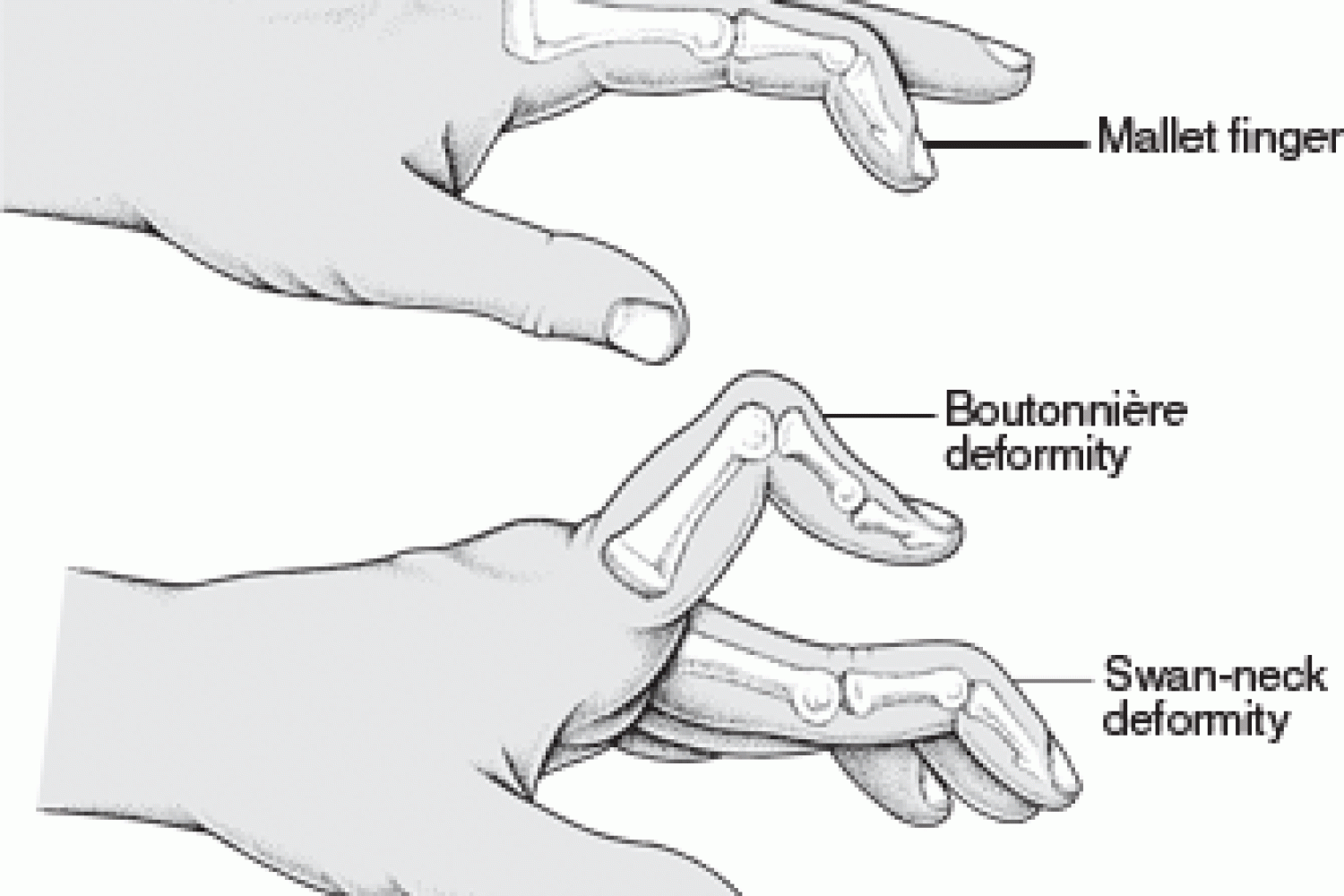Understanding Mallet Finger, Swan Neck Deformity, Boutonniere Deformity, and Dupuytren’s Contracture

Introduction
Hand deformities can significantly impact an individual’s hand function and quality of life. In this comprehensive guide, we will explore four common hand deformities: Mallet Finger, Swan Neck Deformity, Boutonniere Deformity, and Dupuytren’s Contracture. Understanding the causes, symptoms, and available treatment options for these conditions is essential in seeking timely medical intervention and improving hand function.
1. Mallet Finger
Mallet Finger, also known as baseball finger, is a condition characterized by the inability to straighten the end joint of the finger. It usually occurs due to a forceful impact on the finger, causing the tendon responsible for straightening the finger to become damaged or torn. Common symptoms include pain, swelling, and a drooping appearance of the fingertip.
Treatment for Mallet Finger typically involves:
Splinting: The affected finger is splinted in a straight position for several weeks to allow the tendon to heal.
Hand Therapy: Hand therapy exercises may be recommended to restore finger strength and flexibility.
In severe cases, where the tendon is significantly damaged, surgical intervention may be necessary to repair the tendon and restore normal finger function.
2. Swan Neck Deformity
Swan Neck Deformity is a hand deformity characterized by an abnormal position of the finger joints, resulting in a bent middle joint and a hyperextended end joint. It is often caused by conditions such as rheumatoid arthritis, ligament injury, or nerve damage. Symptoms include pain, stiffness, and difficulty in performing precise finger movements.
Treatment options for Swan Neck Deformity may include:
Splinting: Wearing a splint or orthosis that supports the finger in a corrected position.
Hand Therapy: Hand therapy exercises to improve finger strength, range of motion, and coordination.
In severe cases, where conservative treatments fail to provide relief, surgical intervention may be considered to correct the deformity and restore hand function.
3. Boutonniere Deformity
Boutonniere Deformity is characterized by the abnormal bending of the middle joint of the finger and the hyperextension of the end joint. It typically occurs due to an injury to the central slip of the extensor tendon, causing a disruption in the balance of the finger’s tendons. Symptoms include pain, swelling, and difficulty in straightening the finger.
Treatment options for Boutonniere Deformity may include:
Splinting: Wearing a splint or orthosis that straightens the middle joint and allows the tendon to heal.
Hand Therapy: Hand therapy exercises to strengthen the surrounding muscles and improve finger function.
In some cases, surgical intervention may be required to repair the damaged tendon and restore normal finger alignment.
4. Dupuytren’s Contracture
Dupuytren’s Contracture is a condition characterized by the gradual thickening and tightening of the tissue beneath the skin of the palm and fingers. It results in the formation of nodules and cords, leading to the bending of the fingers into a flexed position. The exact cause of Dupuytren’s Contracture is unknown, but factors such as genetics, age, and certain health conditions may contribute to its development.
Treatment options for Dupuytren’s Contracture may include:
Non-Surgical Approaches: In early stages, non-surgical interventions such as hand therapy, splinting, and medication may help manage symptoms and slow down the progression of the contracture.
Minimally Invasive Procedures: Techniques like needle aponeurotomy and collagenase injections can be used to break up the contracted tissue and restore finger function.
Surgical Intervention: In advanced cases, where non-surgical approaches are ineffective, surgical intervention may be necessary to remove the contracted tissue and release the affected fingers.
Conclusion
Hand deformities like Mallet Finger, Swan Neck Deformity, Boutonniere Deformity, and Dupuytren’s Contracture can significantly affect hand function and quality of life. Seeking early medical intervention, understanding the causes and symptoms, and exploring appropriate treatment options are crucial steps in managing these conditions effectively.
If you or a loved one is experiencing hand deformities, we recommend consulting with a qualified hand specialist for an accurate diagnosis and personalized treatment plan. By addressing these hand deformities promptly, individuals can regain hand function and improve their overall quality of life.
Dr. Faisal Ameer, a board-certified plastic surgeon based in Dubai, is recognized as an esteemed expert in the field of hand surgery. With his extensive knowledge, skillful techniques, and compassionate approach, Dr. Ameer specializes in treating a wide range of hand conditions and deformities. His dedication to providing exceptional care and delivering optimal outcomes has earned him a stellar reputation among patients and colleagues alike.